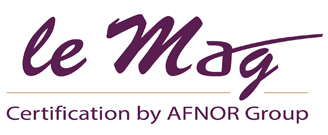Managing a company’s assets in an effective and sustainable manner is a complex endeavour, especially since shareholders and investors are demanding increasing evidence of the company’s asset management performance. Consequently, the method featured in the voluntary standard ISO 55001 provides considerable help, and there are four reasons to back up this claim.
Implementing best practices to effectively manage assets procures a number of advantages. There is ample evidence of such benefits, including better risk management, prioritized investments, removal of functional silos within the organization and implementation of an asset lifecycle management process. To attain this Holy Grail, organizations need look no further than ISO 55001. Voluntary international standard ISO 55001 helps identify an organization’s core competencies for implementing and structuring an asset management system with effective processes.
Help with determining where to start
When initiating an effective strategy for managing industrial and infrastructure assets, the road may be strewn with obstacles. Organizations do not necessarily have a clear insight into their starting position or level of maturity, or what may constitute best practices in terms of asset management. The ISO 55001 standard overcomes this problem by providing a framework. Published in January 2014, this international standard allows companies to carry out an initial review and suggests an appropriate organizational structure based on best practices, so why miss out?
Measurable benefits
For example, some public services in the United Kingdom, a trailblazer in industrial asset management, have reduced their capital costs by 20% and their operating expenses by 10%, while improving their environmental compliance. “These results can be achieved if the organization goes as far as certification. Therefore, everything depends on its strategy, its environment and especially the extent to which the issue is adopted by top management,” adds Edmea Adell, President of IFRAMI, the French Asset Management Institute.
A way of achieving a competitive advantage
Still using the example of the United Kingdom, ISO 55001 certification has been given a significant push by regulatory obligations governing asset management. Companies in the Middle East see certification as a hallmark of excellence, and that is how this exercise is perceived by their customers, shareholders, financial institutions and other regulatory organizations. Showing the company’s certification is a way of gaining an edge in a competitive market, and Greensolver’s recent decision to go down the certification road is a case in point (in french).
Support for driving continual improvement
Organizations that use the standard, whether providing a public service (transport, electricity, water, etc.) or operating in the private sector, require independent certification for implementing the approach in the long term. It is an effective tool for gaining a 360-degree insight into how assets are managed and thereby increasing their value. Annual surveillance audits sustain the process and help the company continually identify opportunities for improvement. “In many cases, the decision to certify an asset management system is prompted by an operational incident. In the event of an offering, it may also be a way of improving rates or attracting new capital,” concludes Edmea Adell.
[button content=”More about ISO 55001 certification by AFNOR Certification (in French)… ” color=”yellow” text=”black” url=”https://international.afnor.com/en/shop/type-of-service/management-system-certifications/iso-55001-asset-management-certification/” openin=”_blank”]





